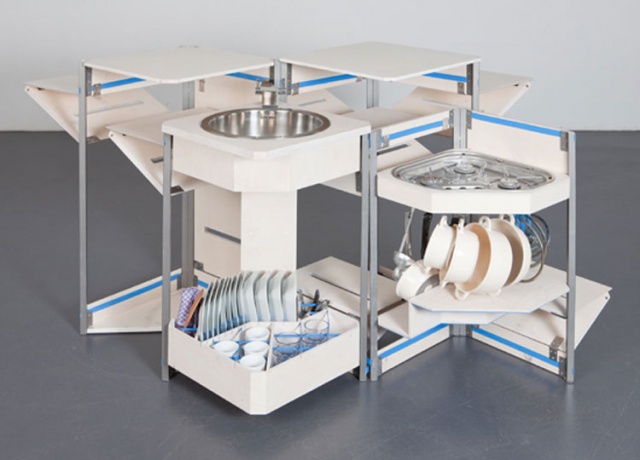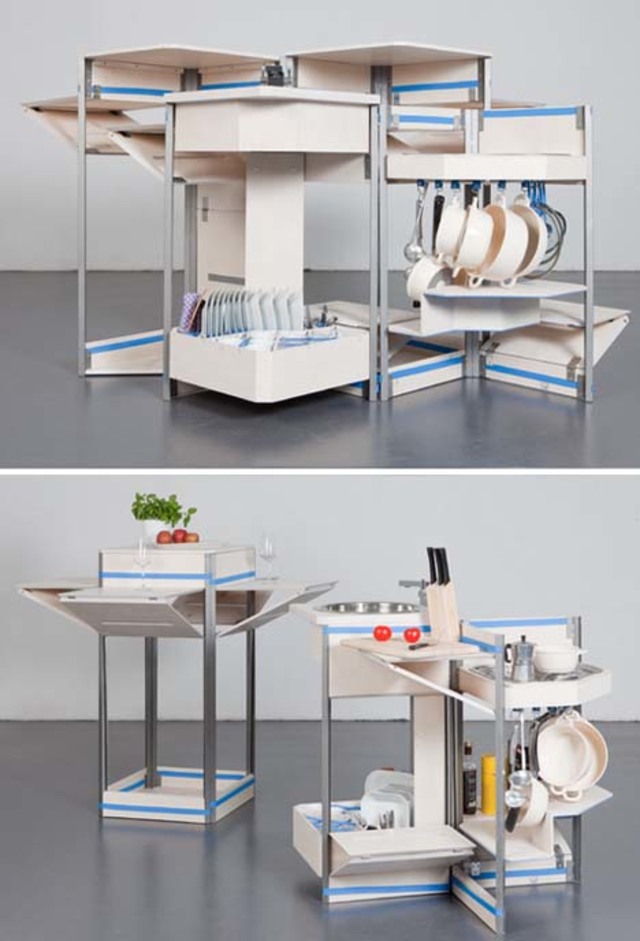Kitchen-in-a-Box Has it All, Including Sink

If making the most out of small spaces is an art, meet two of the most impressions modern masters: Maria Lobisch and Andreas Näther. They’ve come up with a solution for cramped kitchens that isn’t just practical, it’s kind of mind-blowing in just how efficiently it folds in or out to reveal or conceal.

The Justin Case is a contemporary response to an age-old problem of compact living, particularly when it comes to all of the bits, pieces and moving parts that go into making a space to cook, eat and clean.

Constructed of steel, wood and synthetic webbing, this space saving wonder has an even more spacious sidekick that can be used for eating and food storage as needed. That’s a whole lot of kitchen functionality in two very small packages.
Though it may be a bit awkward to use, given how much you have to squat in order to access various elements – and who wants to store clean dishes in an open shelf on the floor? – it’s still a pretty clever way to solve a common problem.

From DesignBoom:
“The unit affords many possible configurations and features a belt system which holds the design together. the prototype is divided into two halves, one equipped with sink, drying rack, shelving system, while the other serves as a dining table for four. the separation of the box halves allows for greater efficiencies in different tasks. each is arranged so that when collapsed, the essential elements are still accessible.”
“‘Stewart & Justin case’ is made from three steel materials, wood and implements textile webbing, a type of strap conventionally used for the production of load lifting slings.”
“‘Stewart & Justin case’ was one of 6 projects presented by the students of burg giebichenstein: hochschule fur kunst und design halle at DMY international design festival berlin 2010. under the theme of ‘1, 2, 3… light kitchen!’, each prototype explored how a square meter of kitchen space could be manipulated and, thus, reexamined the traditional ties and spatial structures of conventional culinary environments.”




